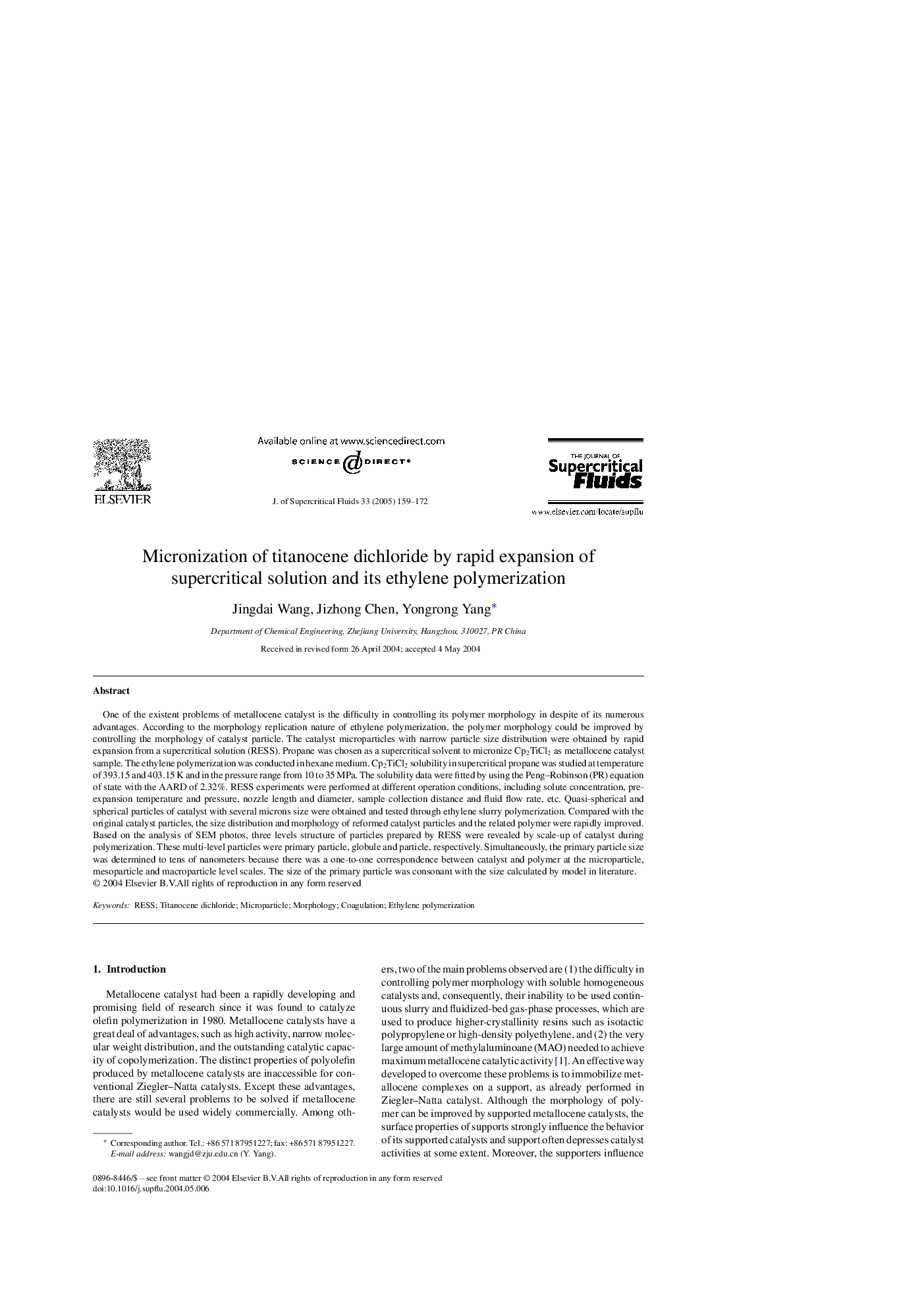| کد مقاله | کد نشریه | سال انتشار | مقاله انگلیسی | نسخه تمام متن |
|---|---|---|---|---|
| 9635859 | 1427493 | 2005 | 14 صفحه PDF | دانلود رایگان |
عنوان انگلیسی مقاله ISI
Micronization of titanocene dichloride by rapid expansion of supercritical solution and its ethylene polymerization
دانلود مقاله + سفارش ترجمه
دانلود مقاله ISI انگلیسی
رایگان برای ایرانیان
کلمات کلیدی
موضوعات مرتبط
مهندسی و علوم پایه
مهندسی شیمی
مهندسی شیمی (عمومی)
پیش نمایش صفحه اول مقاله

چکیده انگلیسی
One of the existent problems of metallocene catalyst is the difficulty in controlling its polymer morphology in despite of its numerous advantages. According to the morphology replication nature of ethylene polymerization, the polymer morphology could be improved by controlling the morphology of catalyst particle. The catalyst microparticles with narrow particle size distribution were obtained by rapid expansion from a supercritical solution (RESS). Propane was chosen as a supercritical solvent to micronize Cp2TiCl2 as metallocene catalyst sample. The ethylene polymerization was conducted in hexane medium. Cp2TiCl2 solubility in supercritical propane was studied at temperature of 393.15 and 403.15Â K and in the pressure range from 10 to 35Â MPa. The solubility data were fitted by using the Peng-Robinson (PR) equation of state with the AARD of 2.32%. RESS experiments were performed at different operation conditions, including solute concentration, pre-expansion temperature and pressure, nozzle length and diameter, sample collection distance and fluid flow rate, etc. Quasi-spherical and spherical particles of catalyst with several microns size were obtained and tested through ethylene slurry polymerization. Compared with the original catalyst particles, the size distribution and morphology of reformed catalyst particles and the related polymer were rapidly improved. Based on the analysis of SEM photos, three levels structure of particles prepared by RESS were revealed by scale-up of catalyst during polymerization. These multi-level particles were primary particle, globule and particle, respectively. Simultaneously, the primary particle size was determined to tens of nanometers because there was a one-to-one correspondence between catalyst and polymer at the microparticle, mesoparticle and macroparticle level scales. The size of the primary particle was consonant with the size calculated by model in literature.
ناشر
Database: Elsevier - ScienceDirect (ساینس دایرکت)
Journal: The Journal of Supercritical Fluids - Volume 33, Issue 2, February 2005, Pages 159-172
Journal: The Journal of Supercritical Fluids - Volume 33, Issue 2, February 2005, Pages 159-172
نویسندگان
Jingdai Wang, Jizhong Chen, Yongrong Yang,